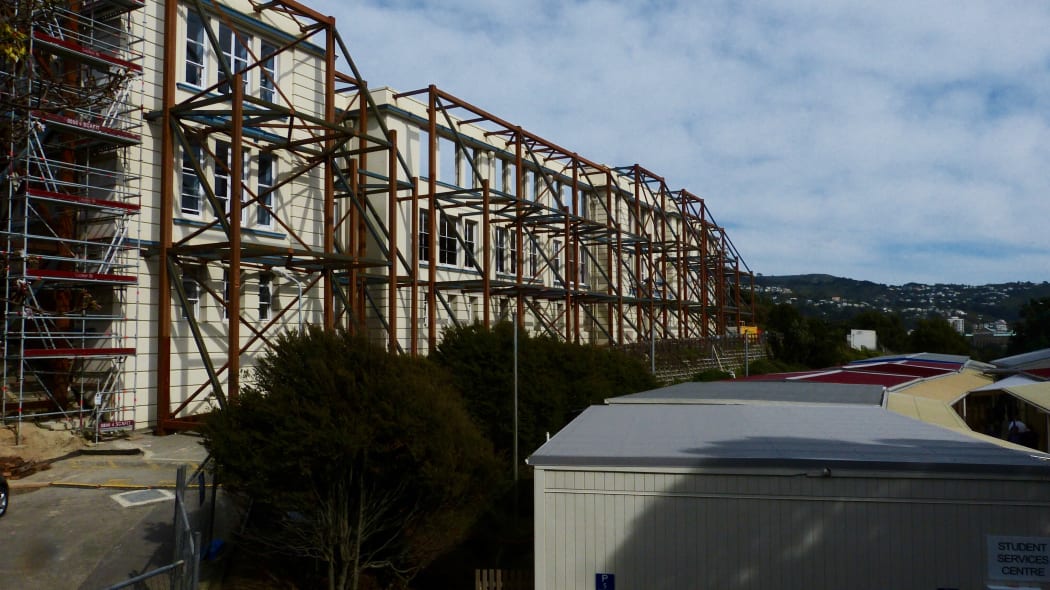Some parts of the country have a high number of schools with serious property problems, Education Ministry figures show.

Steel beams support a facade at Wellington East Girls College. The ministry is assessing the quake-resistance of 2000 potentially-risky school buildings nationwide. Photo: RNZ/John Gerritsen
More than half of the schools with top priority property work are in Auckland, while half of the schools in Napier and Gisborne have buildings that could pose significant operational problems.
The figures were provided under the Official Information Act as the ministry and government embark on a multi-billion-dollar property spend aimed at fixing serious problems and meeting roll growth.
They showed 54 of 2116 state schools have issues classed as priority one, meaning they needed urgent building work to prevent breaches of health and safety regulations, because of problems such as faulty fire alarms or water purification systems.
One in every two schools in Hawke's Bay and Gisborne also needed building work because of a particular type of transportable classroom that was built at schools in those regions in the 1970s and 1980s.
Hawke's Bay Primary Principals Association chairperson Mike Bain said the ministry was leaving schools to replace the portable modular classrooms themselves, and they simply could not afford it.
"The ministry really has washed its hands of them, and asked schools to remediate those through normal replacement strategies - for most schools in Hawke's Bay, the ability to do that in a timely fashion is almost impossible."
If the region's classrooms were on a priority list, they needed to be treated as such, he said.
"Rather than saying 'look we'll get to them in due course and they're not a health and safety issue that requires immediate attention', let's work out a strategy to address them over the next five to ten years, not the 25 that's currently being described."
There were about 170 buildings left at more than 80 schools, and they had all been strengthened to meet earthquake standards.
Education Ministry head of infrastructure Kim Shannon said the Gisborne and Hawke's Bay buildings were older than average and would be upgraded and replaced over the next 20 years.
"They will remain on the priority two list to ensure they continue to be considered as part of future asset management programmes."
Auckland schools 'a priority'
More than half of the schools listed as having priority one issues were in Auckland.
Auckland had 30 schools in that category, which meant 7 percent of the city's schools have priority one problems compared to the national average of 2.5 percent.
However, the Education Ministry said Auckland not only had more schools than other regions, but also more buildings. There was not a significantly higher percentage of buildings in the Auckland region which needed priority one works in relation to other regions.
The next highest-priority group was problems that could pose a high operational risk, such as earthquake strengthening or weather-tightness work.
Nationally, one in eight schools had this level of problem, but in Napier and Gisborne it affected every other school, and in Otago, one in five.
The slightly higher number of schools with priority two issues in Otago was probably related to the age of the schools in the area and/or the type of building materials used at the time of construction.
Waikato and Bay of Plenty had the fewest schools with serious problems.


